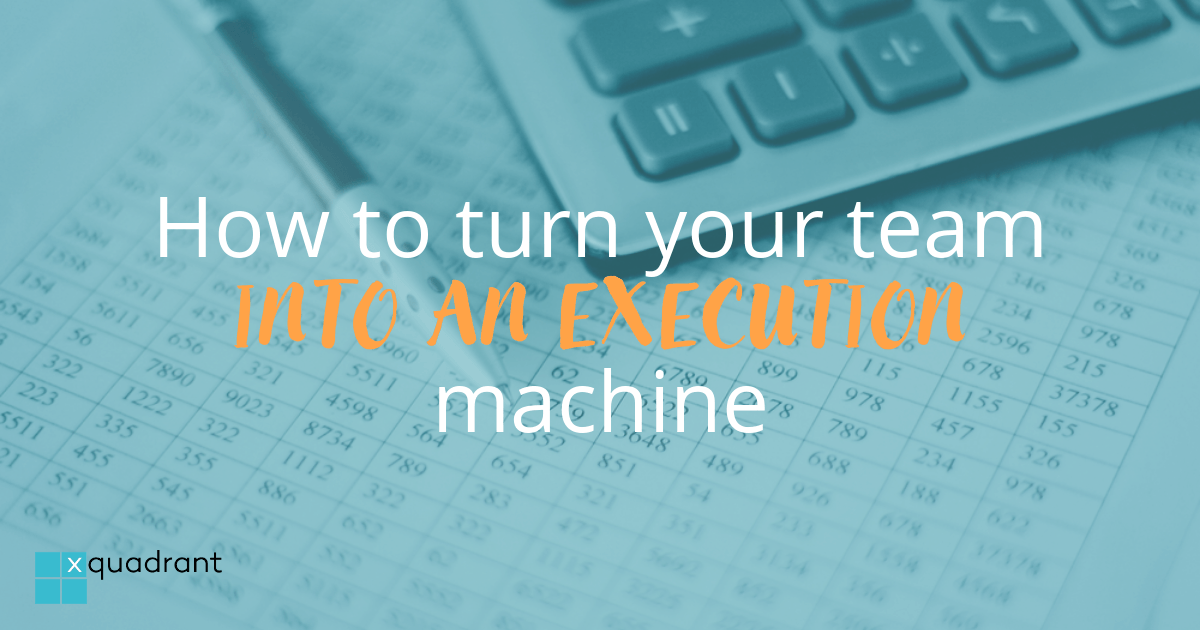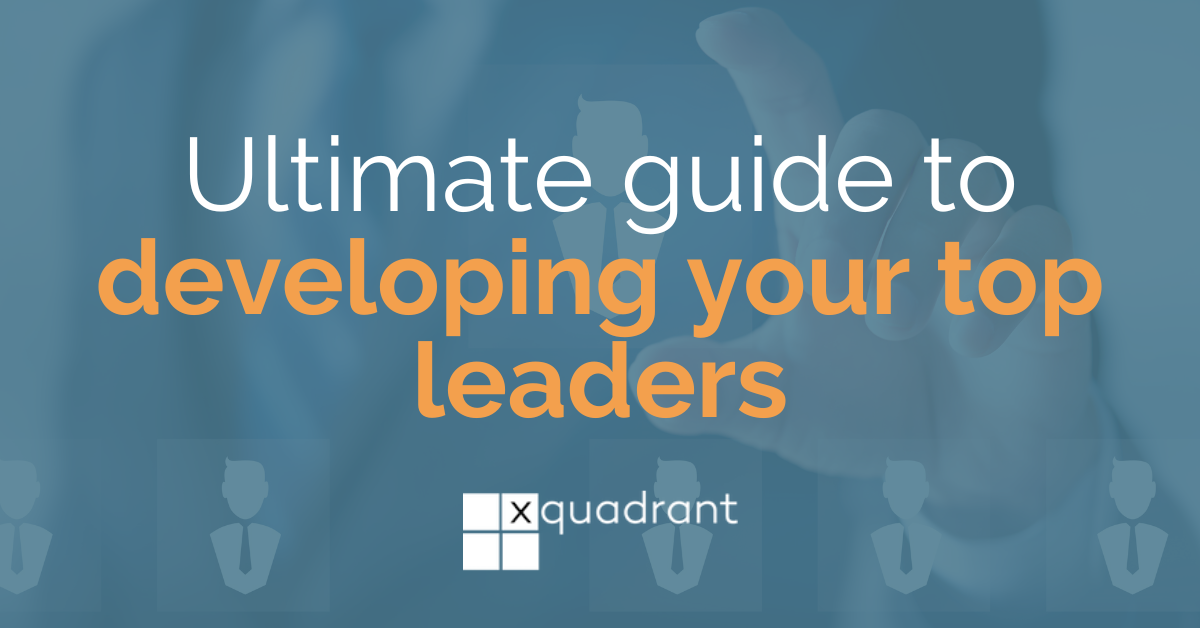One of the paradoxes of modern business is that we’re increasingly using data to inform decision-making, but there’s a real lack of actionable data on the people that solve problems, drive initiatives and innovate solutions.
Over the last 20 years, businesses have adopted personality assessments such as MBTI, DISC, Insights and the like. Whilst these increase self-awareness and can improve team relationships, the “relevance question” remains:
When did you actually make a business decision using your personality instrument?
More...
The GC Index: finally a “personality test” that’s relevant to the C-Suite
Over the last couple of years at Xquadrant, we’ve found ourselves using personality assessments less and less with our clients, and are using instead a powerful modern instrument called The GC Index.
The GC Index doesn’t measure personality. Instead, it measures how individuals are driven to create impact within a business setting. This is significant and relevant for senior business leaders because:
In other words, The GC Index is a tool that provides direct business value to the C-Suite and other organisational leaders: it bridges the gap between people decisions and business results. This results-orientation is why Xquadrant is a proud accredited GC Index partner!
Whilst The GC Index “looks and feels” like a personality assessment, it’s quite different as you’ll see.
The objective of this article is to provide a comprehensive GC Index review and help you understand the possibilities that emerge from this tool. We’ll cover:
Finally a “personality test” that’s relevant to the C-Suite...
The GC Index: Background Review
The GC Index is a relative newcomer to the field of people metrics, and it’s already had a major impact.
Development of the tool began in 2013, as a research project sponsored by a global consultancy to investigate whether it would be possible to identify those highly creative and obsessive individuals within a business who would ideate and drive transformational initiatives, understanding that these people don’t always fit into the corporate “machine” and may not be easily identifiable.
By the time the index was finalised and launched in 2017, the scope had widened to not only identify the ‘game changers’ within an organisation, but also to understand the nature of the unique contribution that every individual was driven to make.
The response to such a business-focused people instrument has been very strong, and as of 2020, over 1300 clients in 50 countries use the GC Index:
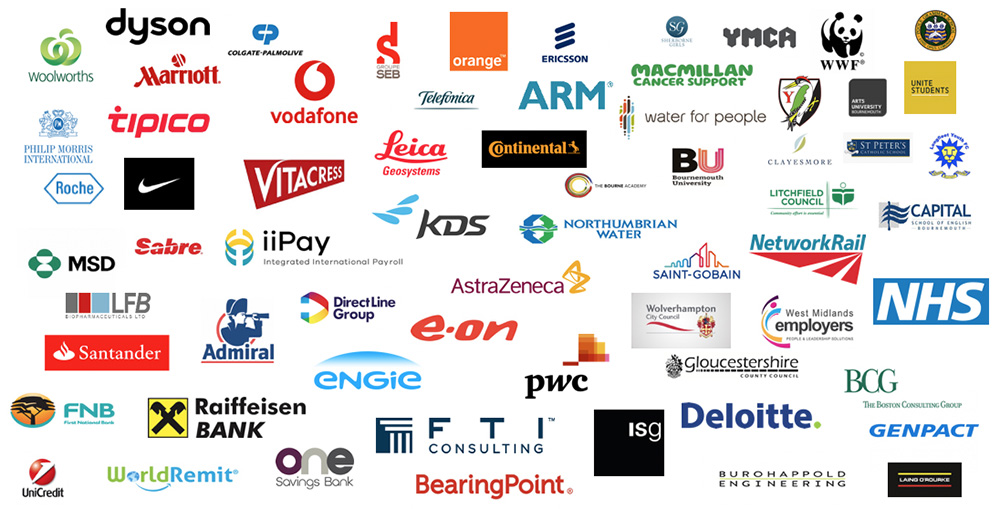
Furthermore, the product has earned a string of endorsements:

The GC Index was awarded “Gartner Cool Vendor” status - something no personality assessment has achieved and a testament to the business focus of the tool.
“The GC Index offers an innovative framework for measuring and improving organisational culture. It focuses on finding out how individuals prefer to contribute — and therefore have their biggest impact — while feeling satisfied in their roles.”
- Jouni Forsman & Ian Keene (Gartner)

The Recruitment and Employment Confederation (REC) has validated and partnered with the GC Index to be more relevant to the Good Recruitment Campaign and its 3,500 recruitment members to attract & retain the best talent.

The HR Director magazine is leveraging The GC Index® to bring more value to the HRD/Chief People Officer community in the UK to attract, retain & develop the best talent and create diverse organisations
The GC Index doesn’t measure personality. Instead, it measures how individuals are driven to create impact...
Benefits of the GC Index to the business leader
So, why do we at Xquadrant increasingly use The GC Index as a key tool in our executive coaching and leadership team development work?
I would point to five immediate reasons. The GC Index:
In our GC Index review, let’s look at each of these in more detail.
The GC Index is outcome- and action-orientated
Companies bring various data to bear when making people decisions. For example, in recruitment, you may analyse expertise, experience and personality. However, until now nobody has known how to measure the impact that an individual wants to make within the business.
The GC Index does exactly that. It measures the energy you have to create impact in different ways across the business.
In other words, it helps you understand the outcomes that your team are motivated to create, and point the activities and projects where each person will contribute with most energy and effort:
Whereas personality tests go deep into psychology, requiring you to imagine the possible causal chains guiding behaviours, the GC Index “cuts to the chase” and gets straight to the question of business outcomes.
The GC Index directly maps to core business activities in any company
Developed in response to very practical concerns of businesses regarding how to navigate digital disruption, The GC Index maps directly to the core activities that occur in any company.
In any project,
In GC Index language, these steps correspond to the five “proclivities”: Game Changer (creating), Strategist (understanding), Implementer (delivering), Polisher (continual improvement) and Play Maker (collaborating).
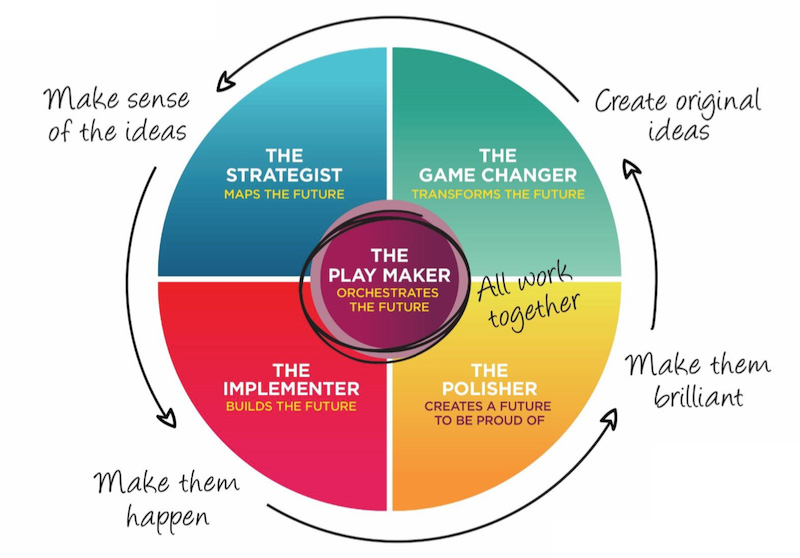
This tight correlation with the business cycle makes the GC Index applicable in virtually any business decision where people are involved, as we’ll see during the course of this article.
The GC Index “cuts to the chase” and gets straight to the question of business outcomes...
The GC Index is optimised for “speed to impact”
I recently heard Trudie Adock, Enterprise Learning Director at AstraZeneca, explain how impressed she was at the GC Index’s speed to impact, and I couldn’t agree more.
The success of any tool, system and framework we deploy in a business depends upon its adoption. When a tool is easy to adopt, results come quickly. The GC Index gets adopted easily and put to use quickly for at least 3 reasons:
The GC Index is a unifying lens to inform decisions across multiple business processes
As mentioned previously, because The GC Index maps directly onto the core business cycle (from invention through execution to sustaining innovation), it’s directly applicable to multiple business use cases and scenarios.
We have examples of The GC Index being used in all of the following domains:
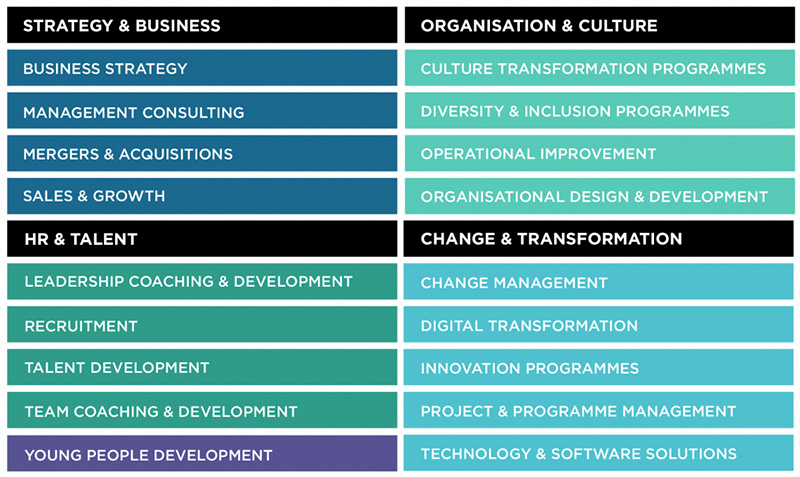
GC Index is a tool that provides direct business value to the C-Suite and other organisational leaders: it bridges the gap between people decisions and business results.
We will dive into some example use cases in the latter part of this article.
The GC Index scales from a single leader to an entire organisation
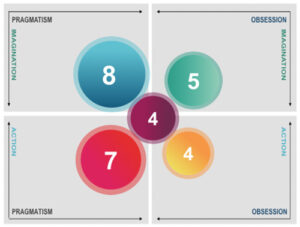
1) At the personal level, for example in 1:1 executive coaching (working on personal leadership and influence).
The standard GC Index report is a simple and helpful tool in these engagements. However, as you'll see the real magic begins as you apply the tool more widely to real business issues across teams and organisations.
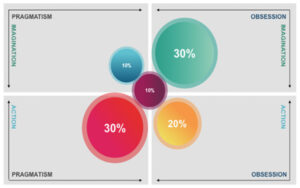
2) At the team level, for example in systemic team coaching (working on team dynamics and overall team impact).
Complementing the standard GC Index report, we also use the team GC Index report here, which shows how the energy of the team is split across the five ‘proclivities’.
It’s valuable to see not only the split of people’s primary focus areas, but also the overall amount of energy the team brings to each aspect of the business cycle.
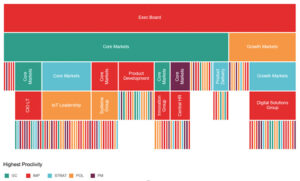
3) At the organisational level, for example in analysing the cultural make-up of a firm, planning innovation strategies or accelerating transformation projects.
The anonymised organisational report is helpful here: it’s a fraction of the cost of the individual profile and provides an overview of each team. This allows us to identify specific teams and areas that merit at deeper focus, and “unlock” the full profiles for additional insights in the places that matter.
The organisational view:
Have you ever made a business decision using a personality tool? If not, check this out...
The GC Index: An overview
So now you know why the GC Index is relevant. Let’s now dive into the detail.
In essence, the GC Index measures an individual’s energy to make an impact in 5 key areas (“proclivities”) that map nicely onto the core business cycle:
Imagination vs Obsession: The proclivities actually represent how we combine our handing of ideas (imagination) or tasks (action), and whether we focus on these obsessively or pragmatically:
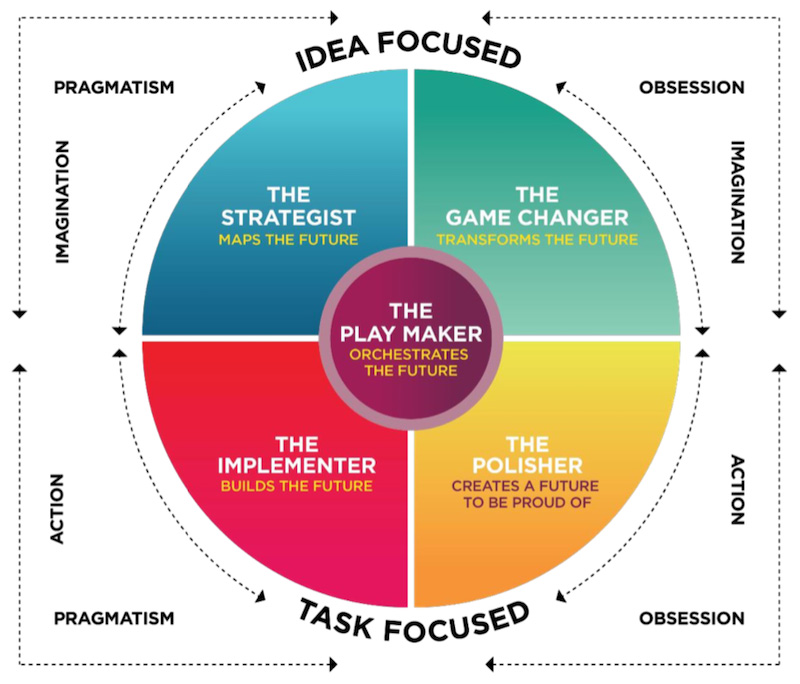
Here’s a thumbnail description of the five proclivities:
Game Changers
“It’s not about reinventing the wheel. It’s about finding something to replace the wheel.”
Game Changers are individuals characterised by an obsessive imagination that is not constrained by traditional ways of doing things – or by what they see as arbitrary rules and expectations.
They see possibilities and ways of doing things that others don’t. They have a way of imagining how things could be, and when they become obsessed with an idea, they see how things should be. Their contribution to an organisation is radical rather than an incremental change.
Strategists
“Why are we doing this?”
Strategists are ‘big picture thinkers’ who, at their best, see and analyse patterns and trends in their world. They have an ability to ‘see’ where events are taking us and how to respond to that prediction of how things will develop.
They will enthuse and influence others with new, creative and innovative approaches to doing things. They will have the business acumen and analytical skills to convert ideas into commercially focused strategies.
Implementers
“Let’s get the job done and move on to the next project”
Implementers have a strong drive to achieve. At their best, they can be relied upon to deliver. They are often seen as conscientious, ‘a safe pair of hands’.
They are typically high energy, action and outcome focused. They will get things done and demonstrate a resilience to setbacks.
Polishers
“If a job’s worth doing, it’s worth doing properly”
Polishers are rarely satisfied. They assume that things can always be improved and channel this optimistic drive into continuous improvements, innovations and the pursuit of excellence and perfection.
They can take products, processes and procedures with patience for incremental change, and constantly seek to improve them.
Play Makers
“Get the relationships right and the right tasks will get done”.
Play Makers are at their best when they are getting things done through others, they are the facilitators and orchestrators within a team.
It’s easy to assume that charismatic leaders are playmakers, but the truth is that charisma isn’t measured by the GC Index. What truly distinguishes the Play Maker proclivity is their ability to set aside their personal agenda to help the team win.
The GC Index profile: a review
An individual’s GC Index profile is a score from 1-10 in each of these proclivities: so for example:
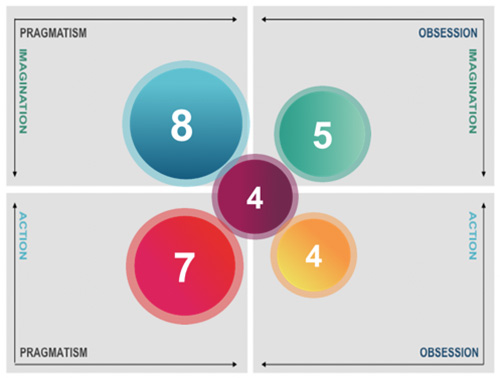
This gives 100,000 combinations of GC Index results, so the intent is not to pigeonhole people.
For the sake of memorability, however, people will often refer to themselves by the first two proclivities. In the case above, this would be “Strategist/Implementer”.
Hopefully it’s already clear how a “Strategist/Implementer” might differ from say a “Polisher/Implementer”:
- The former will prefer to focus on understanding the business context and key drivers, formulate the most impactful plan, get it done, then move on.
- The latter will prefer to take a strategic priority, delivery on it, and then work on improving it until it’s truly delivered to a high standard.
The GC Index profile report is some 27 pages, and focuses on:
The GC Index: Personal Experience & Review
As a “GCologist” (an accredited GC Index expert) I have reviewed and discussed many profile results with the individuals concerned. But my first experience with the tool was, as always, personal.
I had my own sense of where on the map I would fall: which proclivities I expected to dominate. And, naively, I thought that my knowledge of MBTI and other personality tools would allow me to second-guess the results fairly accurately.
I was wrong.
My number-one proclivity was indeed Strategist, as I expected. But the balance of the others raised an eyebrow; it was quite a surprise.
Digging deeper with the GCologist I was working with, I started to see the truth of the results. This was a real “aha” moment for me; a perceived area of mediocrity was actually a strength and a motivating factor; an area I thought would be highly energising turned out to be somewhat of a mirage.
I see this “raised eyebrow effect” repeatedly as I work with different leaders using the tool. Things click into place; there's a new self-understanding; and (importantly) new questions surface for the individual.
Comparison review between the GC Index and Personality Assessments
The main difference between the GC Index and other personality assessments is, very simply, that they measure different things.
Personality assessments measure preferences for various cognitive processes (extraversion, agreeableness, dominance, etc…), and this can be genuinely valuable for self-awareness and development, and social dynamics.
The GC Index measures preference for impact; it’s much more focused on behaviours and outcomes and therefore it’s much more closely aligned with the interests and concerns of business leaders.
I’ve not met a business leader who’s uses a personality assessment to make business decisions. But the GC Index is directly applicable to a variety of use cases, as we’ll see in detail below.
Moreover, these aren’t limited to “HR processes” like recruitment or leadership development, but to any business process or transformation project.
We’ve taken a number of popular personality instruments - MBTI, DISC, Insights, Belbin - and compare and contrast with the GC Index to show how they are complementary. You can find our analysis below.
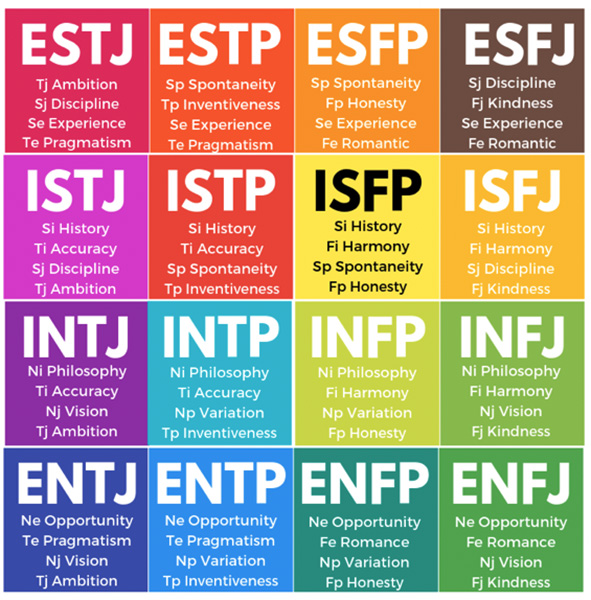
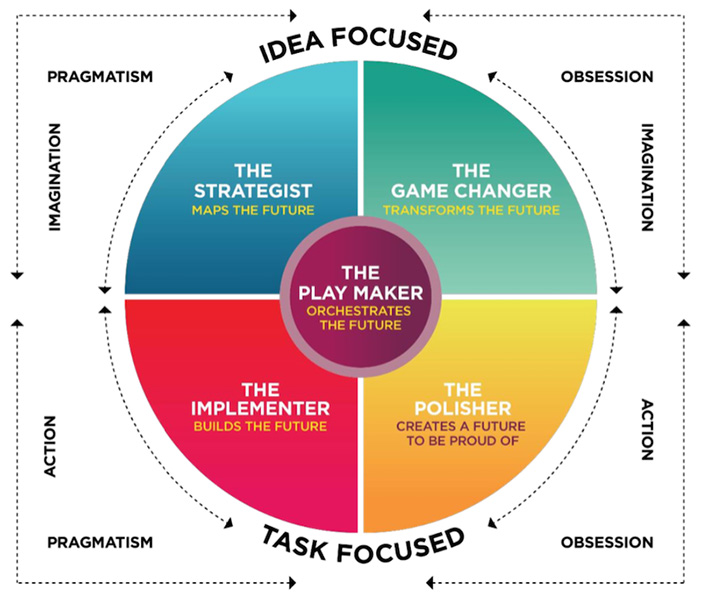
The Myers-Briggs Type Indicator (MBTI) is one of the most popular personality tests in circulation. Based on the insights of Carl Jung, the tool assesses psychological preferences across four dimensions (Extraversion-Introversion, Sensing-Intuition, Feeling-Thinking and Judging-Perceiving). This gives rise to the famous four-letter combinations: ENTJ, ISFP, and so forth.
There’s plenty in the MBTI to explore, and it can be a great tool for self-insight. I’ve used it myself for years in both personal and business settings to understand how our personal style might create friction with colleagues.
However, the sixteen four-letter acronyms are opaque, difficult to remember and almost impossible to apply in real business situations for most people who aren’t prepared to invest the time needed to become an “MBTI geek”.
Putting it another way: I’ve got a business challenge. You’re an ISFP and I’m an ESTP. So what?
The GC index is a complementary tool to MBTI because whereas the MBTI measures personality, the GC Index measures where you want to make an impact in the business cycle.
As a result, the GC Index creates a totally different conversation. We need to address the high level of customer complaints. You’re a Strategist/Play Maker and I’m a Polisher/Implementer. Do you want to take the lead on organising the brainstorming workshops with the different stakeholders whilst I gather the data on the precise quality gaps we’ve already identified?
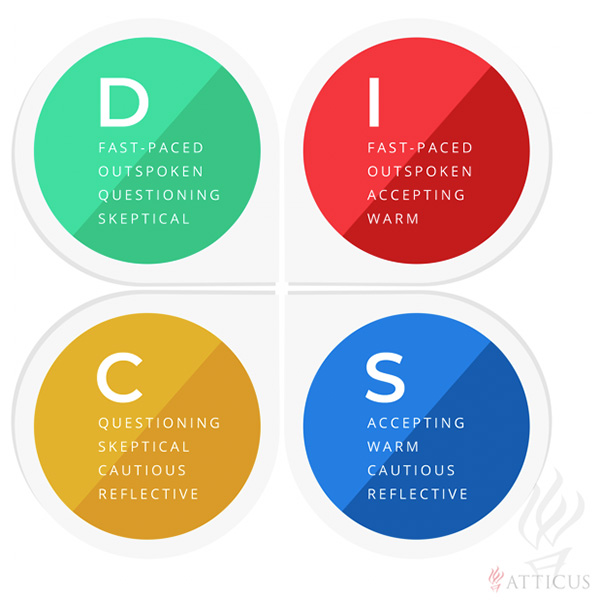
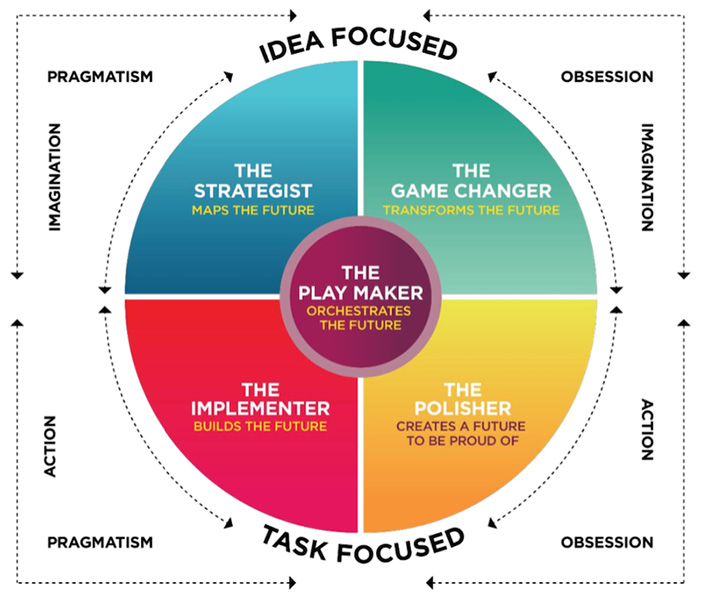
The DISC personality tool is widely used in business and appreciated for its simplicity and insights into personal interaction styles. The instrument measures the following four characteristics:
DISC shines in considering interpersonal interactions and understanding responses to stress. However, like MBTI it can be quite hard to remember what the letters stand for, and it can be hard to remember what other people’s profiles are and what that means in practice. “You’re high D, low I right… so what does that mean?”
When it comes to business decisions, DISC appears to be less practical. It’s rare to hear people talking about the fact that there isn’t enough “I” in the group, or we need someone with some more “S” for that role.
The GC index is a complementary tool to DISC because whereas DISC measures personality, the GC Index measures where you want to make an impact in the business cycle.
As a result, the GC Index gets straight to the business behaviours. “Our leadership team doesn’t have much energy for Polisher, so no wonder we aren’t improving our products and processes fast enough.” Or “As I have low energy for Strategist, I need to recruit an Operations Director who’s strong in both Strategist and Implementer”.
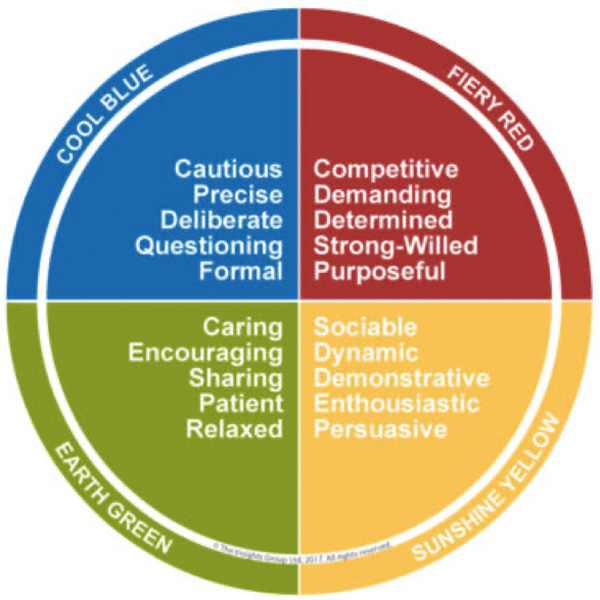
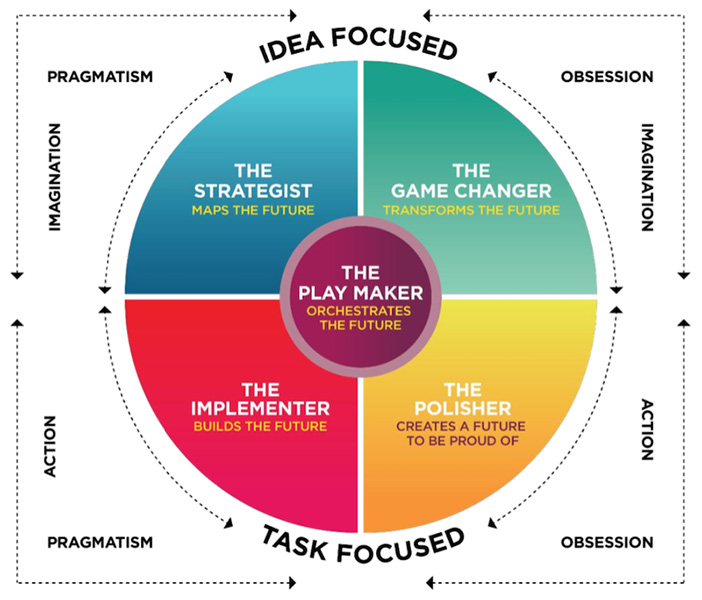
The Insights personality tool has gained incredible traction in recent years thanks to the simplicity and memorability of its four colour model to help people understand their style, their strengths and the value they bring to the team.
Like MBTI, the Insights Discovery model is based on the extensive research of Swiss psychologist Carl Jung.
The four colours are called Fiery Red, Sunshine Yellow, Earth Green and Cool Blue. See the chart above for some descriptors of each of these categories.
The Insights tool is great for personal insight and for team-building and communication-styles workshops. However, I notice some reluctance to use such forced vocabulary in a business setting. “I’m Fiery Red with a bit of Sunshine Yellow,” hardly trips off the tongue around the boardroom table!
The GC index is a complementary tool to Insights because whereas Insights measures personality, the GC Index measures where you want to make an impact in the business cycle.
So the GC Index is much more natural and easier to adopt in the business context: “I’m an Implementer/Polisher”. And it answers a broader set of questions than the Insights tool: “who do we need on this project team?”, “does this person have the energy to really drive innovation on our core product line?”, “does this person shore up the blind spot on our board of directors?”
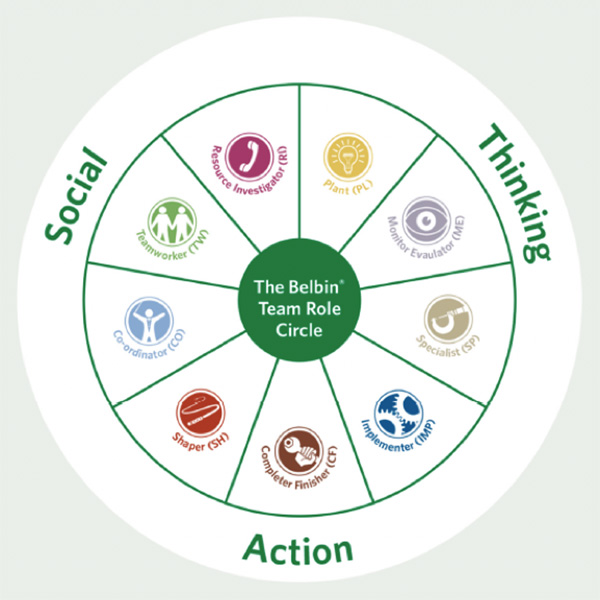
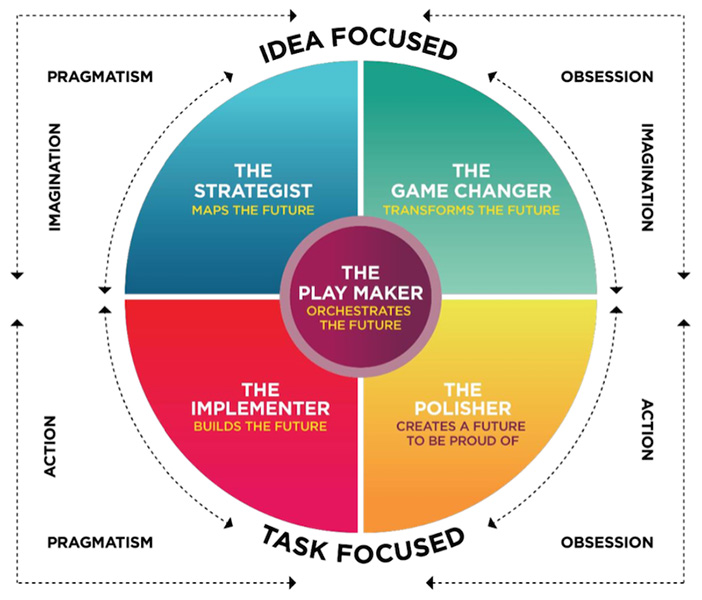
Dr Meredith Belbin and his team identified nine clusters of behaviour that can make effective teams:
The Belbin instrument clearly has a lot to add when optimising the dynamics of an individual team or when helping individuals identify their preferred contributions. However the framework can be hard to remember, with nine categories and some non-intuitive naming of roles making adoption quite tricky, and it rarely gets used in broader people decisions within a team or company because people play different roles in different teams (perhaps a specialist in one, bringing key knowledge, but completer/finisher in another).
The GC index is a complementary tool to Belbin because whereas Belbin examines the precise role people play in team situations, the GC Index brings a simple and sticky language to measure where you want to make an impact in the business cycle.
Think of Belbin as going “extra deep” on a single team’s dynamics, and the GC Index as providing strong insight on the individual team but also how the team fits into the broader organisational system and business processes in which it operates.
GC Index: Review of key Use Cases
The GC Index is the best tool we have found to bridge the “data gap” between people and business outcomes. As a result, it’s a single “people instrument” with use cases across the business (including, but not just limited to, HR use cases such as recruitment and talent development).
In the sections below you can explore different use cases for the GC Index.
The point however is not so much to focus on just one, but to understand that the instrument can be reused across the business in a variety of applications; thus creating a common language for deploying people to their greatest impact.
The Harvard Business Review published an analysis of various studies that demonstrated an average of 31% productivity increase when employees are satisfied in their roles. The GC Index is incredibly valuable in directly aligning role scope with natural proclivity and motivation.
For example:
One client of mine noticed that his profile was rather ‘flat’, with no proclivity showing much energy.
Digging deeper, this revealed some frustrations with his current role, which had evolved from ‘building the organisation’ to ‘managing the organisation’.
The previous role played to his preferred proclivities: Game Changer, Play Maker and Implementer; the new role played to his least preferred areas: Strategist and Polisher. He realised it was time to scope out a new role in the organisation.
At Xquadrant we often use the GC Index in our work developing and coaching high-achieving leaders. Your GC Index score will reveal the leadership style that comes naturally to you, and it’s liberating to understand that you don’t need to force-fit yourself into someone else’s mould.
For example, here’s an excerpt of some of the leadership styles we’ve observed in famous and successful leaders, and the GC Index combinations that these styles represent.
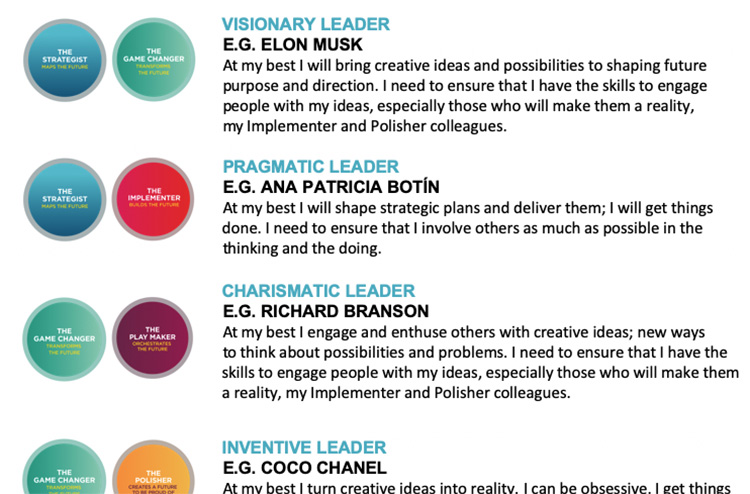
Beyond leadership styles however, there’s a deeper psychology to the GC Index that builds real self-awareness. Our strongest proclivities are likely to be rooted in formative experiences and our resulting assumptions about the world, what success looks like, and how to thrive. When we understand these drivers, we’re able to be less driven by unconscious biases and instead lead at a new level.
For example, here is a summary of potential underlying thought patterns for a Polisher (source: The GC Index):
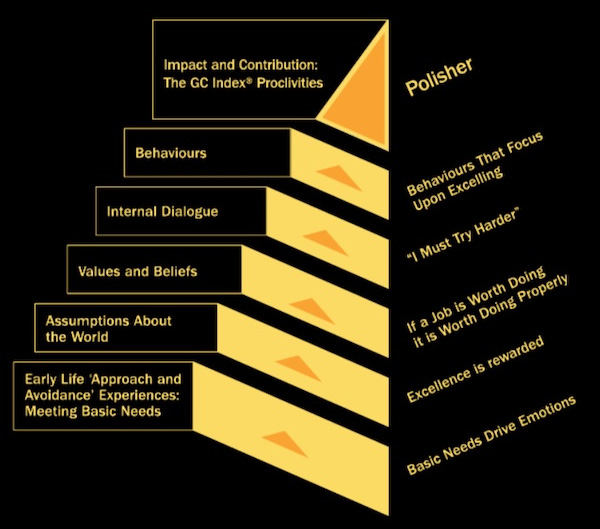
Sometimes teams are given charters or commissions that simply don’t align with the natural energies of the people involved. Cue frustration and a sense of “fighting against the system”.
Have a look at this GC Index team summary profile, showing the energy distribution of the team as a whole:
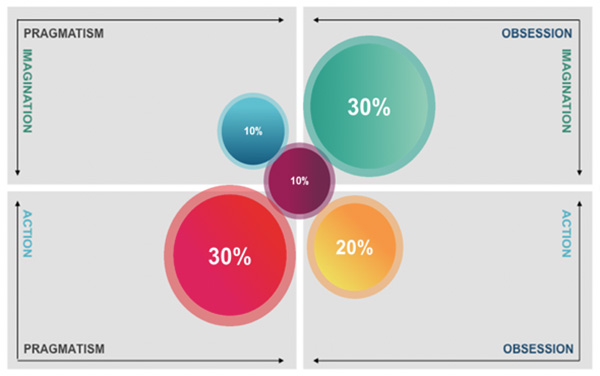
High in Game Changer; high in Implementer; low in Strategist and Play Maker.
We have seen teams use the GC Index as a way of identifying mismatches, and re-negotiating their mandate within the organisation.
For example, one team had a high Strategist proclivity but was not being asked to contribute to any of the planning within their business unit. As a result, they were aware they weren’t having their greatest impact. With the GC Index as a common language, the team was able to identify how it could expand upon its operational charter to bring strategic recommendations to management.
When we run GC Index workshops with leadership teams, we’ll use the tool to investigate the team’s contribution and blind spots:
A recent study of 1100 companies carried out by the Institute of Corporate Productivity found that those that promoted collaborative working were 5x more likely to be classed as “high performing”.
When we run leadership team workshops, we often start by putting up the anonymised GC Index profiles of the entire team and ask: “whose profile is whose?” It’s amazing how little teams really know of each other’s core drivers.
Can you really spot the game changer in your midst? Do you know who has the highest energy for continual improvement, or who has a burning energy to ensure everyone is working together effectively? Teams generally find they didn’t know their colleagues as well as they might have guessed.
Also, how do the team and the team leader relate?
For example, here’s a team in a manufacturing company: we’re looking at the aggregate results for the team compared with the individual profile of the leader.
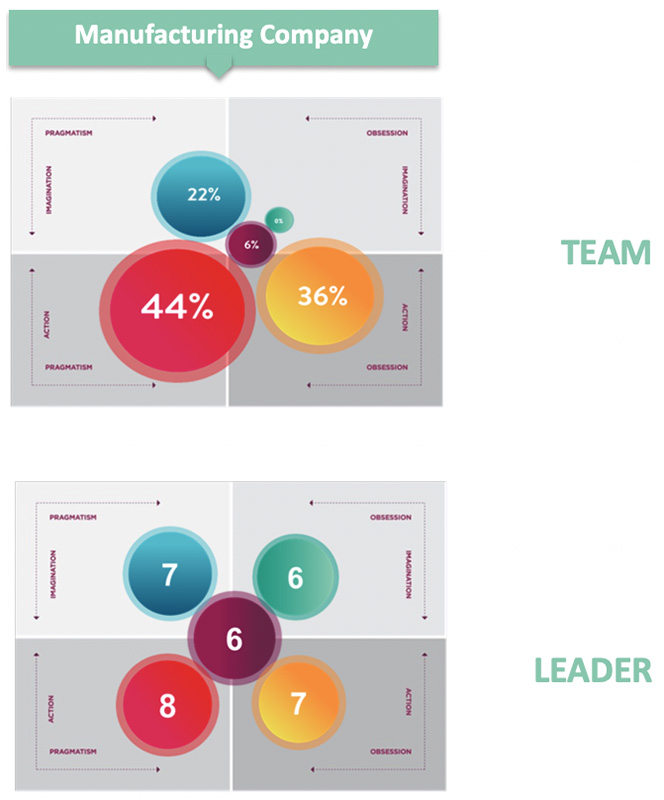
The standout insight here is that the team has almost zero energy for creative game-changing innovation and for play-making collaboration, and an overabundance of energy for implementation. This may cause the team to get stuck in the weeds, resist change initiatives in the wider company or fail to get ahead of marketing trends.
The leader, having stronger Strategist and Game Changer proclivities than the team as a whole, will need to work carefully to open the team up to the necessity of these activities and lift their focus from operational tasks.
Recruitment decisions are complex. Even once experience, expertise and personality have been factored in, there’s a real risk of recruiting “in the leader’s own image” or “in the team’s image”.
For example, consider this online legal product company:
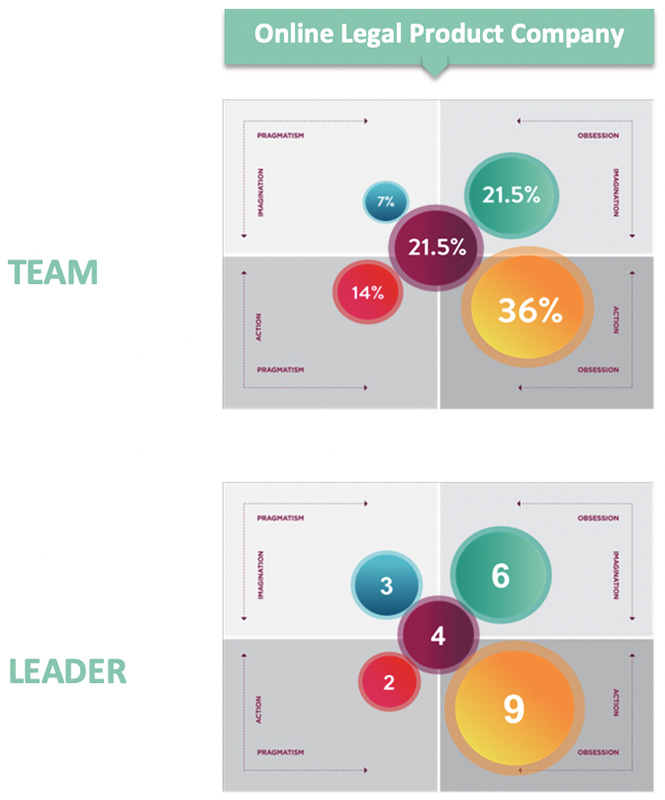
The team reflects the predispositions and blindspots of the leader almost exactly! Rather than bringing complementarity, there’s a real structural weakness, especially around energy for innovation and strategic thinking.
So how can we use the GC Index to inform recruitment? Here's another real example.
Sally, Rachel and Julie are the founders of a small business. Their GC index profiles are below. What do you notice?
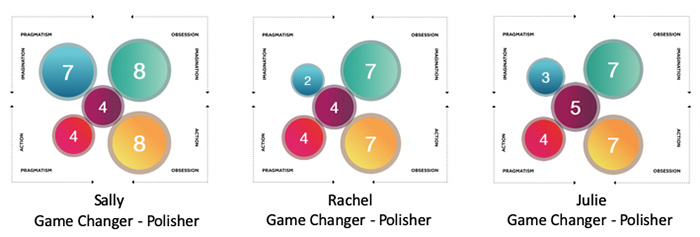
As you can see, they actually have rather similar profiles. All three are game changer/polishers. So we can expect lots of creativity and an obsessive and potentially perfectionist drive to turn ideas into reality.
Sally is the only one with a high energy for Strategist, so we can imagine that she may be struggling to channel the others’ energies towards the most probable and worthwhile initiatives. This indeed turned out to be the case.
None of the founders have a lot of energy for the implementor proclivity. They are more interested in developing the initial ideas and ways to improve what they've already built, but actually delivering the projects is less exciting to them. To compensate for this they were looking to hire a chief operating officer.
Having sourced a number of candidates and filled them for experience, expertise and personal chemistry, they had a shortlist of three candidates.
The GC Index profiles of the three candidates are below. Who would you hire?

On the surface, you might well point to Michael. He has an extraordinarily high energy for getting things done, and also has the strategic site to make sure he is working on the right things. However giving the profile of the existing team, perhaps he is just too different? He has a low energy for a game changer and therefore may not be as open to the creative ideas from the rest of the team, and his locally make a score suggests that he might be overly concerned with achieving his own goals rather than optimising the outcomes for everybody.
Jane would appear to be a much easier fit, though perhaps she's actually less keen to be focused on the implementation, and a relatively low strategist score might also fail to complement the team.
These insights confirmed some of the questions and conversations that the executive team were having about the new hire. In the end they went for Adrian, who brought both a strategic perspective and a desire to get projects over the finishing line, but who also had an openness to new ideas that the founders valued.
We would never recommend making hiring decisions based uniquely on the GC index profile, but as you can see the profile can inform the process by highlighting areas for exploration and discovery, and helping the team anticipate how the person will fit into the bigger organisation.
Companies are rightly focused on increasing the diversity of their organisations, aiming for a more just and productive mix of genders, ethnicities and ages.
However, it’s quite possible that despite all this focus, managers (and indeed whole organisations) can recruit in their own “cognitive image”. In other words, we have a tendency to hire people who think like ourselves.
Imagine an executive team that on the surface looks diverse: even representation of men and women; different cultural backgrounds, and so on. It could still be possible, in GC Index terms, that the team is entirely composed of, say, Strategists!
We need teams with diversity of thought and focus, and not just diversity of background.
The GC Index has been shown to be independent of gender, cultural background or age. It’s therefore a fantastic tool for laying aside prejudices (“men are more strategic than women” … or whatever) and ensuring a true psychological diversity.
It’s also incredibly helpful to use the tool as a way to explain that someone’s not just been hired on the basis of their gender or skin colour, but “because they bring a much-needed Polisher proclivity to the team”.
Once again, we’d not recommend making selection decisions purely on the instrument, but it does bring objective data to inform the decision.
If we want to shift corporate culture, we need to be able to understand the culture that we have. Culture isn’t uniform; there are often different pockets of culture within the same firm. And from a business perspective, we want to understand:
All these are questions the GC Index can shed light on. Using the GC Index organisational metric, we can easily and cost-effectively build an overview of each department or team within the organisation, as shown below:
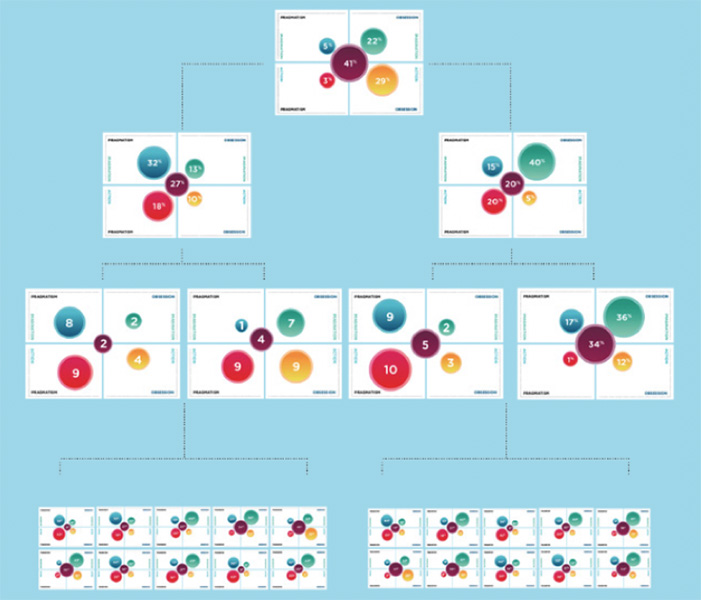
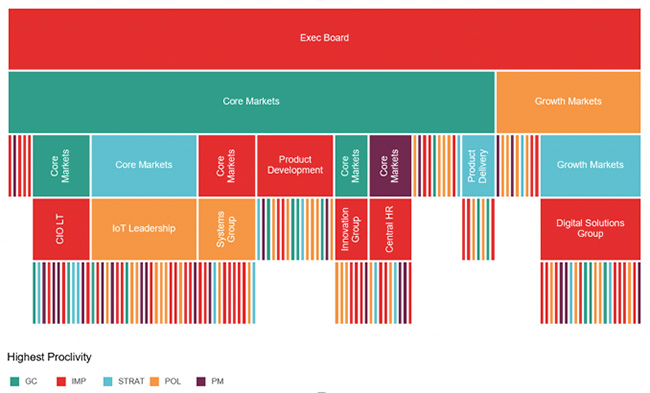
From this we can then drill into the specific areas of interest. For example:
Every transformational initiative follows the business cycle we outlined above, and is therefore ripe for improvement by the GC Index. Ideas are generated (Game Changer), a plan is formed (Strategist), the work streams are delivered (Implementer) and the resulting output iterated upon (Polisher) - all whilst the wider organisation is brought along to support the change (Play Maker).
So you can map your digital transformation initiative, new project, or business process against the 5 GC index proclivities, such as the real-life example shown in the graphic below
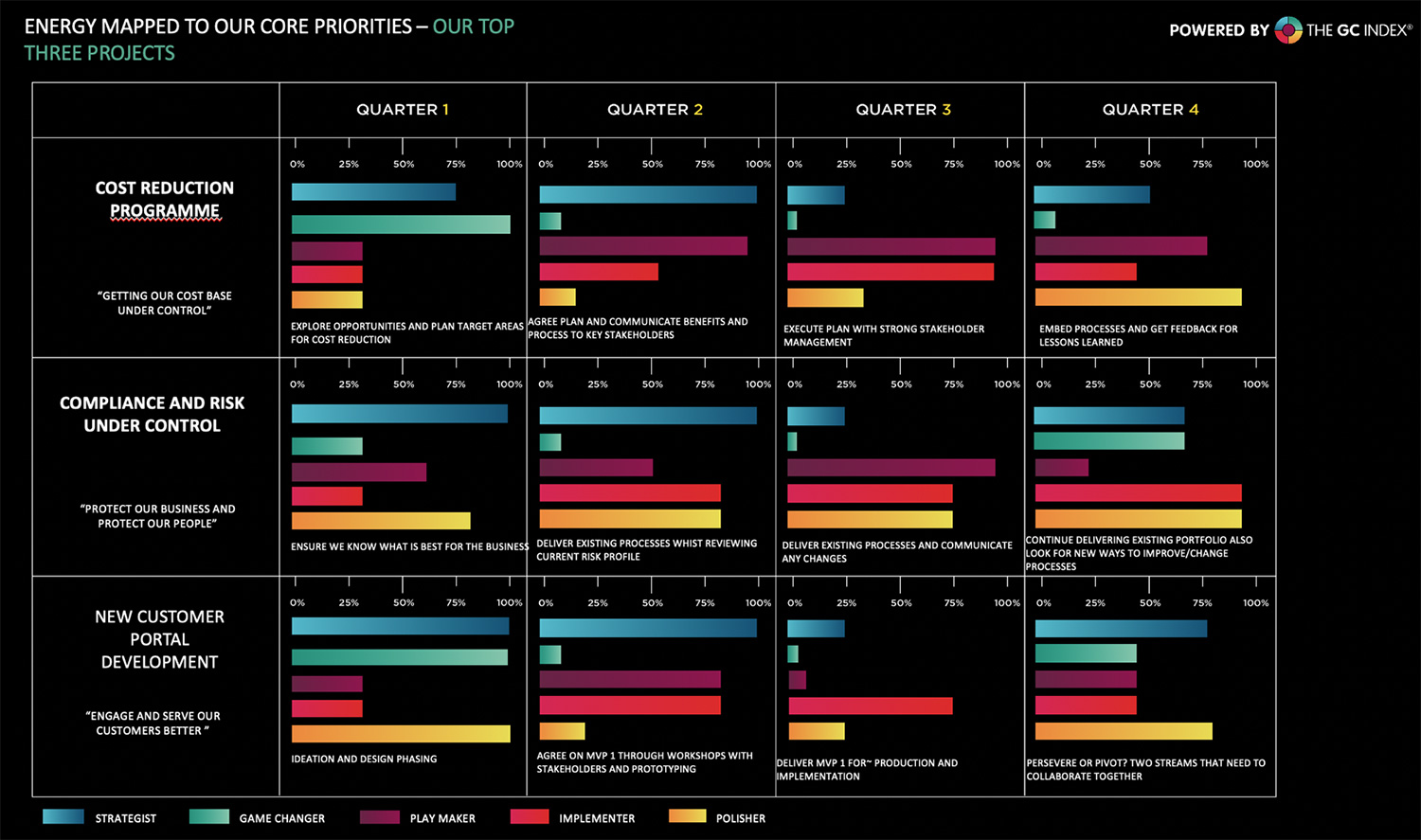
You can then use this information to:
How to engage employees around the company mission or around company values?
Well, very often companies come up with a motto or mission statement and roll it out to employees - one size fits all. And it doesn’t resonate.
We’re now seeing GC Index clients “translate” their key internal communications so that they resonate with each of the five proclivities. They can then send tailored messages to each employee to help each individual better understand how they - with their proclivities - can contribute meaningfully to the corporate mission.
One client had an internal mantra of (I disguise slightly:) “Innovate radically!” The idea of radical innovation resonated well with the Game Changers, but how would an Implementer relate to that message? They’ve now translated that message to engage all 5 proclivities.
I won’t share their exact messages here, but you could imagine something like…
An increasing number of firms are choosing to become certified as “A GC People Company” to demonstrate that they understand the direct correlation between an engaged, empowered workforce and better business performance.
“Being a GC People Company enables us to recruit people for the impact they want to make, value people for the impact they do make and develop people for the impact they have the potential to make.”
- Jo Lewis – Talent Director TM Forum
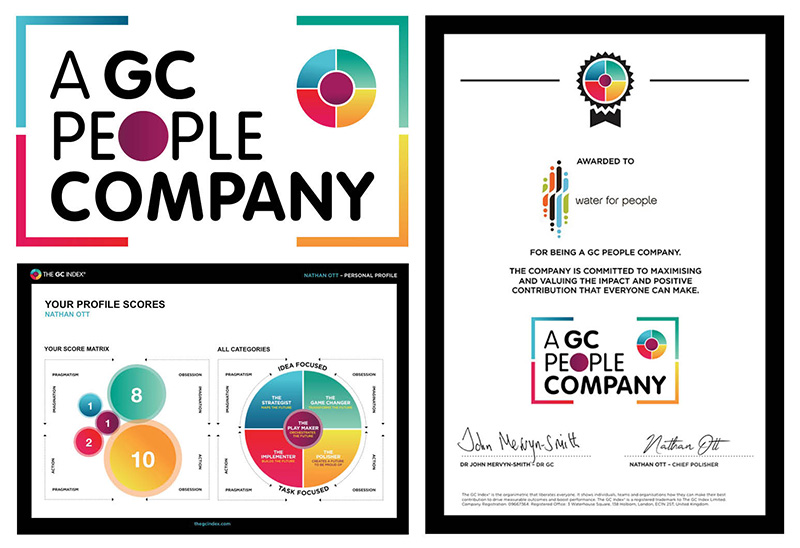
When you are integrating two organisations following a merger or acquisition, how can you make informed and objective decisions about who goes in what seat in the integrated organisation? And how can you know what really drives your new colleagues?
Enter the GC Index.
You can very quickly establish a shared language in the combined organisation around the contribution that everyone wants to make, and can objectively ensure that the new org chart is populated by people with an inherent motivation for the requirements of the role.
Colleagues can quickly understand what makes each other tick, and create working agreements that go “with the grain” of each person’s makeup.
The GC Index & Xquadrant
At Xquadrant we use the GC Index in both our 1:1 coaching engagements and in our executive team coaching work. Once the instrument demonstrates its value within the executive team, we are then able to help companies scale it across their business in a progressive manner, focusing on the top business challenges and apply the GC Index insights to help solve those.
Xquadrant differentiates itself from other GC Index Partners in three ways:
Getting started with the GC Index
If you’re interested in understanding how the GC Index might help you, your team or your business, please get in touch. We may even be able to arrange a complimentary assessment for you!

